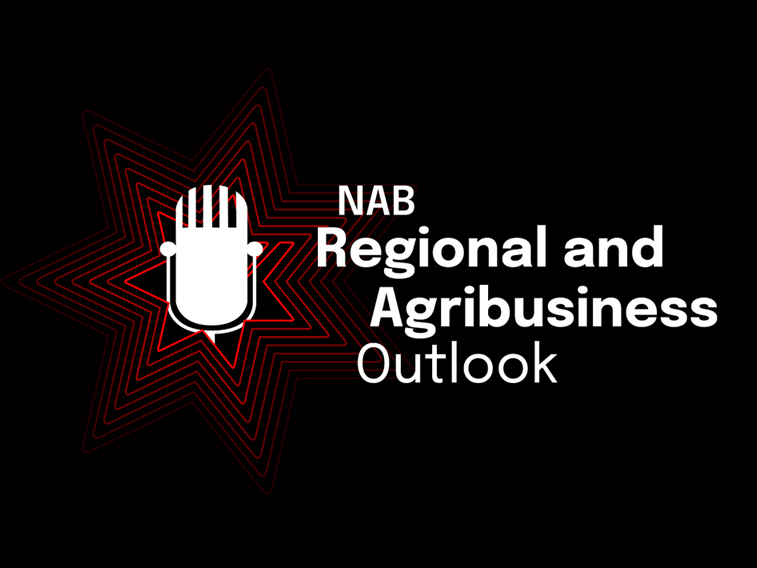Take a closer look at Australia’s Farm Management Deposits scheme with NAB senior leaders.

Podcast
Tess Herbert, who along with her husband Andrew runs one of the most successful feedlot operations in Australia, is the first female to become President of the Australian Lot Feeders Association.
With 150 years of Australian farming heritage behind her combined with an appetite for cutting-edge practices in animal welfare and sustainability, Tess Herbert has taken over the reins of the feedlot industry’s peak body.
When Tess Herbert quit her job as an English teacher 16 years ago to join her husband Andrew fulltime in the operation of their expanding New South Wales feedlot business, little did she know she’d one day be leading the industry.
The former city girl married into one of Australia’s oldest farming families – Andrew is the fifth generation born onto the Eugowra property bought with a land grant by his first fleet convict forefathers. She’s now five months into her role as President of the Australian Lot Feeders Association (ALFA), the first woman to take on the position.
Herbert says it was a hunger for knowledge about innovation in the industry that was behind her interest in being part of the board back in 2009 when she was first appointed. “I had a lot of interest in industry systems, for example, the national livestock identification system, and how they worked,” she says. “I’m a real champion of the industry systems we have in place, and how they underpin our markets both domestic and export.”
The Herberts operate one of the most successful feedlot operations in Australia. The 18th largest in Australia, it has the capacity for 12,500 head of cattle on feed across two feedlots – Gundamain on the family property at Eugowra and Ladyman at Wagga Wagga. Andrew is the “big picture” person in the business while Tess looks after areas such as compliance, workplace health and safety, human resources, environmental compliance and the financials.
“I enjoy working with systems and procedures,” she says. “We’re a good team because Andrew doesn’t enjoy that side of the business. He’s the ideas man.”
Named Australia’s best feedlot operation in its category in 2014, the business has become an industry leader in its commitment to cutting edge animal health and sustainable farming practices, with its feedlot design and management a case study for industry best practice.
Animal welfare is a particular passion for Herbert, who’s been the long-time chair of the ALFA’s health and welfare committee and has helped drive innovation in the industry to improve the treatment and care of animals in feedlots. “We have a responsibility to the animals that we take very seriously,” she says. “To make sure they’re comfortable in the feedlot environment, with water and feed, freedom from fear and pain, and able to still exhibit their natural behaviours.”
The Herberts have incorporated the latest ideas in feedlot design to ensure the best facilities in terms of animal welfare and handling. The Gundamain feedlot was built based on the designs of renowned US animal behaviourist Temple Grandin aimed at reducing stress in cattle. Staff are a key asset as well, says Herbert, trained by veterinarians to recognise if animals are ill or distressed, and in the best methods for low-stress stock handling. The latest move has been to fully shade the Gundamain property as part of a strategy to prevent heat stress.
Animal health and welfare will remain one of Herbert’s priorities in her new role, along with continuing to promote the level of transparency in the industry.
“I don’t think it’s necessarily a greater level of transparency but just to let people know we’re not a closed shop,” she says. “People come in and look at feedlots all the time, so there’s no secrecy involved in what we do. We’re very open about what we do, but we need to continue increasing the awareness about that.”
Herbert says she’s also keen to boost recognition of the importance of feedlots in the supply chain, and dispel some of the myths that abound. “Nearly a third of what you’ll see in supermarkets is grain fed beef, but it’s not necessarily labelled as such,” she says.
“You see it labelled in restaurants, but not in supermarkets. Consumers should be allowed to choose but have a full knowledge of the production system in that choice. And we need to tackle some of the myths, like the lower greenhouse gas emissions in grain fed beef production.”
The biggest challenge confronting the feedlot industry in the immediate future is cattle supply. Herbert says MLA forecasting shows cattle procurement will become increasingly difficult by the end of the year and into 2017.
“The Australian herd has dropped dramatically over the last couple of years,” she says. “We’ve had a couple of really good years, and we’ve been using up the herd. It takes time to rebuild.”
Herbert laughs off the significance of being the first woman in the role. “Women already play a big role in this industry,” she says. “There are two other women on the [AFLA] board and my CEO is a woman. There are women managing feedlots. No-one blinks an eye; it’s just accepted.”
More from NAB:
© National Australia Bank Limited. ABN 12 004 044 937 AFSL and Australian Credit Licence 230686.